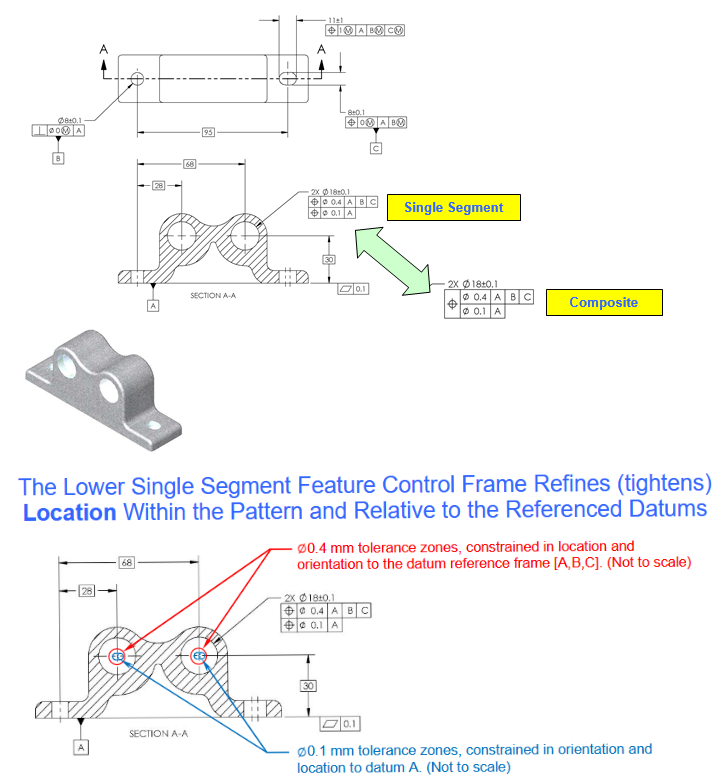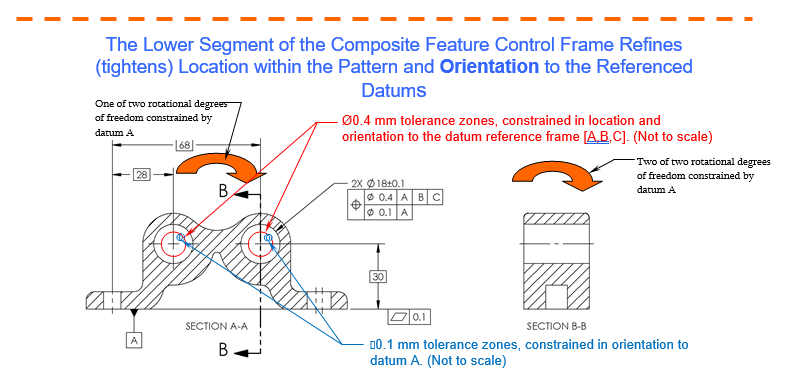Watch Out for the Subtle Difference with Regards to Datums: Single Segment Tightens Location to the Datum Reference Frame - Composite Tightens Location Only Within the Pattern
Although a couple of past tips have dealt with composite versus single segment feature control frames, we still receive questions regarding the difference. So, here we go again.
Single segment simply means that there are two separate feature control frames which should be read independently. Both requirements must be met.
Composite, on the other hand, is represented using a single geometric characteristic symbol with multiple tolerances shown. The primary purpose of the lower segment of a composite position tolerance is to control the location of features within a pattern. If any datum feature references are repeated in the lower segment, they refine the orientation (perpendicularity, parallelism or angularity) of the pattern relative to the datum reference frame.
The holes may not be out of location relative to one another and datum A by more than 0.1. Relative to the complete datum reference frame, the pattern may move and rotate in a plane parallel to Datum A by 0.4mm. In other words, the feature axis for both holes must be within the Ø0.4 mm cylindrical tolerance zones that are fully constrained to the datum reference frame [A,B,C], and must also be within the Ø0.1 mm cylindrical tolerance zones that are constrained in location and orientation to datum A.
The holes may not be out of location relative to one another by more than 0.1, and the pattern must remain parallel to Datum A (as the red arrows indicate) even though it may be out of location relative to Datum A by as much as 0.4mm. In other words, the feature axis for both holes must be within the Ø0.4 mm cylindrical tolerance zones that are fully constrained to the datum reference frame [A,B,C], and must also be within the Ø0.1 mm cylindrical tolerance zones that are constrained in only orientation to datum A.
In accordance with ASME standards Y14.5M-1994, Y14.5-2009, & Y14.5-2018
This tip was originally released in April 2003


